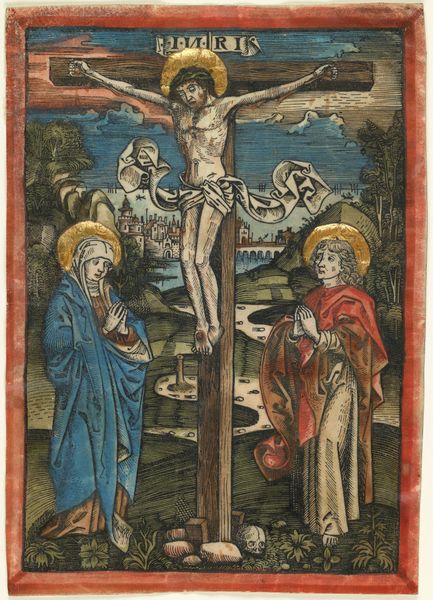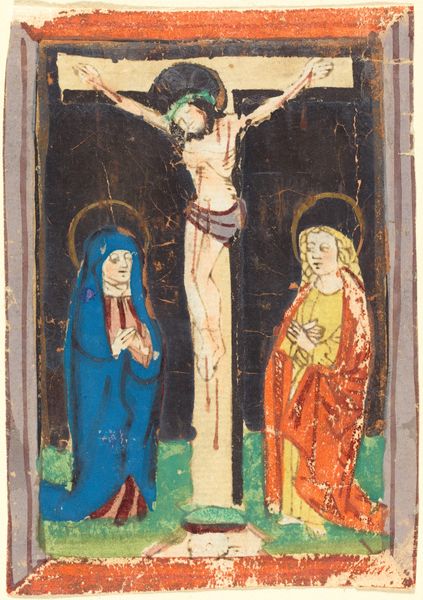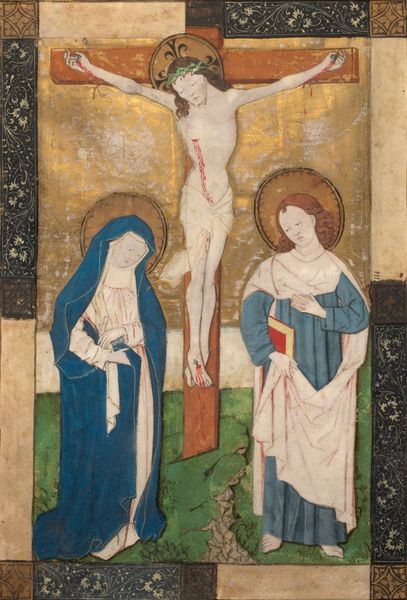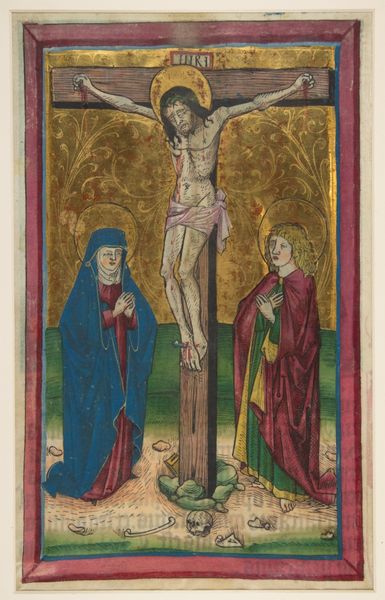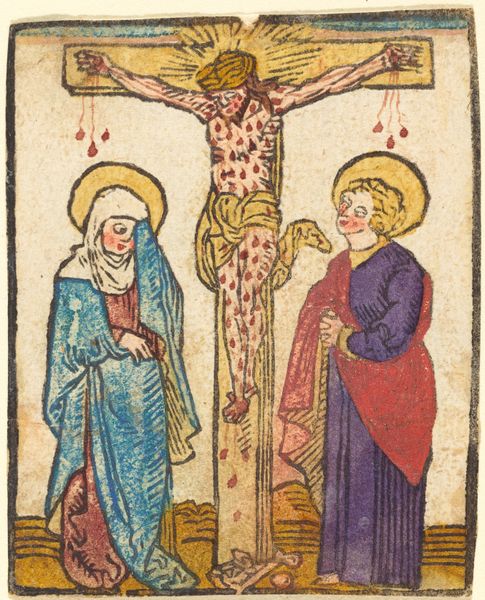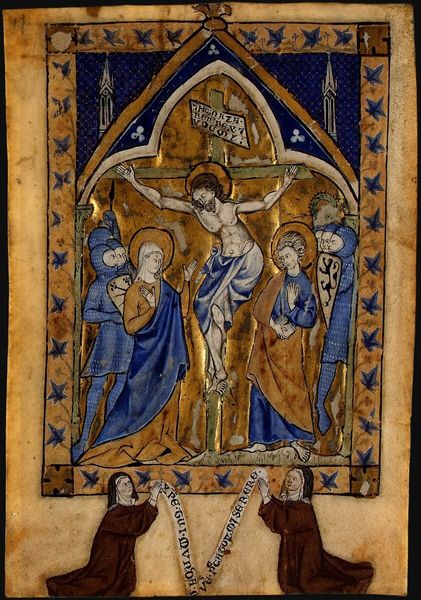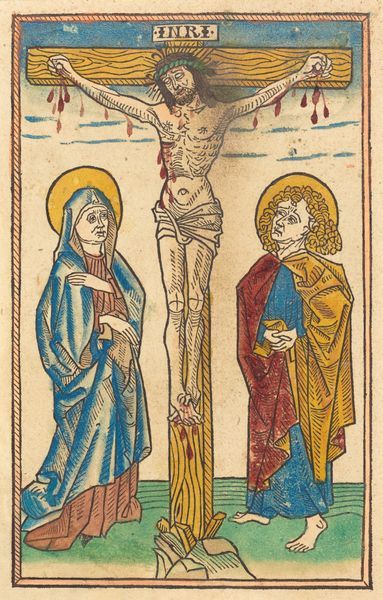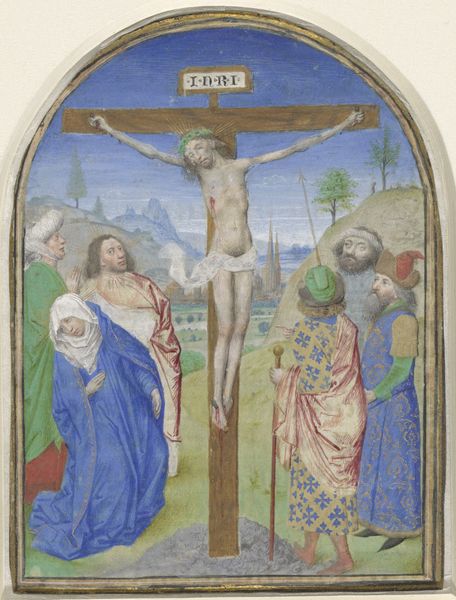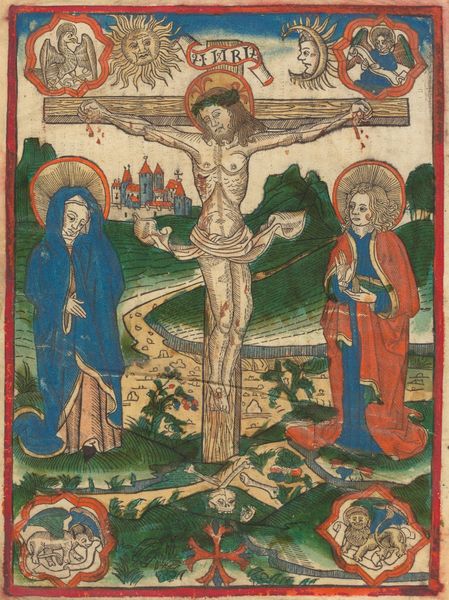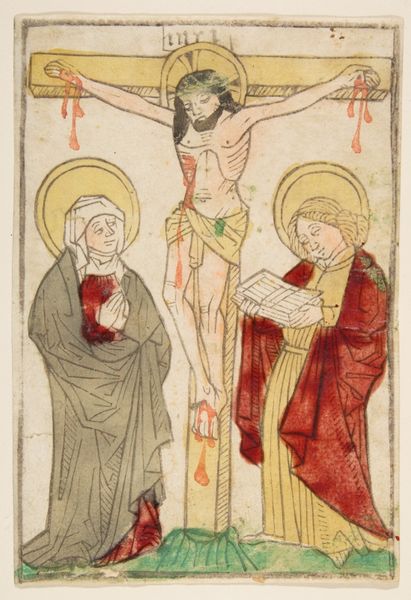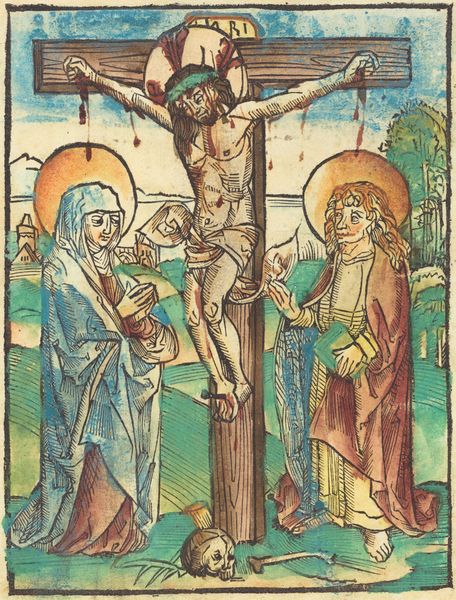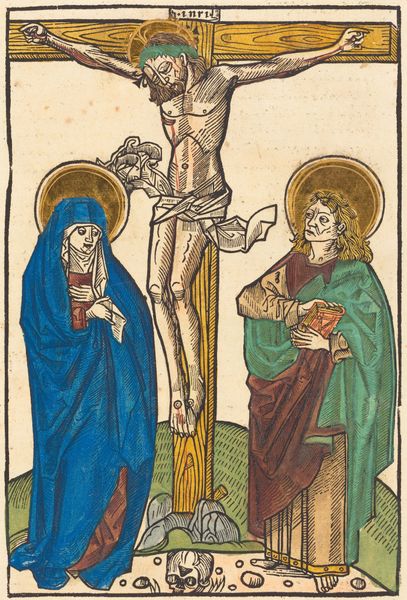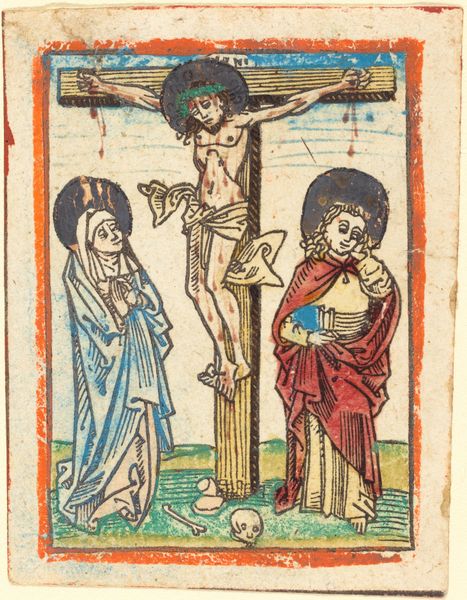
drawing, tempera, fresco
#
drawing
#
medieval
#
tempera
#
figuration
#
fresco
#
history-painting
#
international-gothic
#
miniature
Dimensions: overall: 20.2 x 15.3 cm (7 15/16 x 6 in.)
Copyright: National Gallery of Art: CC0 1.0
Curator: The overall effect is quite striking. I find the scene depicted possesses an unsettling stillness. Editor: We’re looking at "The Crucifixion," a tempera and ink drawing on parchment that was created around 1430 by an anonymous artist working in the International Gothic style. Curator: Immediately apparent is the somewhat flattened picture plane. The artist renders form without a strict adherence to naturalistic proportions, creating a schematic rather than realistic representation. And observe the lines: they define and contain, lending the composition its geometric strength. Editor: Yes, and the imagery is powerful. The icon of the crucifixion has carried enormous emotional and spiritual weight in Western culture. Here, we see Christ on the cross, flanked by Mary and John the Evangelist. Each figure emanates loss through culturally legible poses. The halos are striking; not just signs of sanctity, they also look like symbols of agony as blood pours from his wounds. Curator: Precisely, the semiotic function of these formal elements cannot be overstated. The halos act not only as signifiers of divinity, but also draw our eyes around the composition, creating a visual rhythm between the three heads. The contrasting color palette – the rich dark background versus the lighter figures, accentuates the sense of the tragic. Editor: Red serves as an extremely visceral reminder of the violence and ultimate sacrifice at the core of Christian belief. Think of how blood signifies martyrdom but also rebirth across centuries. Curator: A sophisticated employment of formal devices underscores a theological construct. This interplay demonstrates the potent dialogue between material execution and ideological expression. Editor: These images crystallize core beliefs of salvation and suffering into enduring visual symbols. Studying their transformations lets us chart belief itself across cultures and epochs. Curator: Absolutely, a powerful confluence of form and idea. The picture plane, though restricted, facilitates intense contemplation. Editor: Agreed. Seeing those common threads helps us grasp the emotional continuity linking the past to our present experiences.
Comments
No comments
Be the first to comment and join the conversation on the ultimate creative platform.
